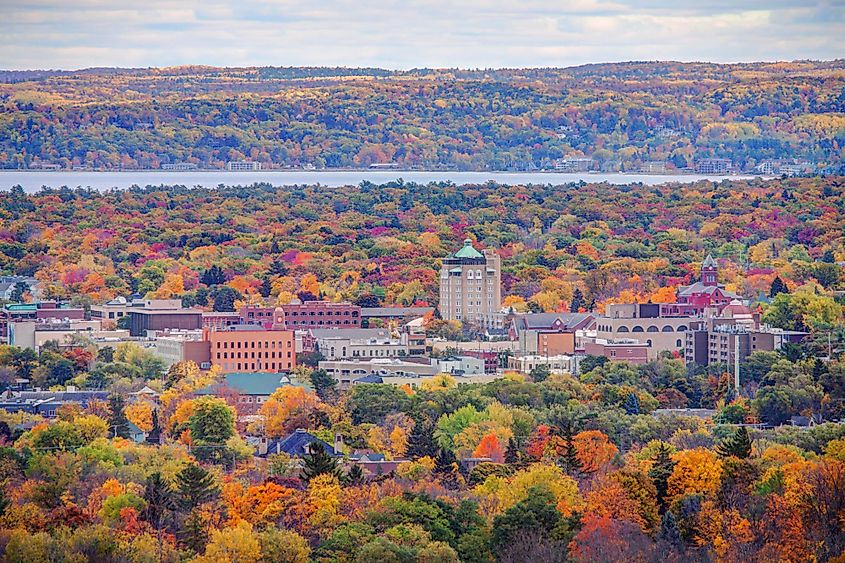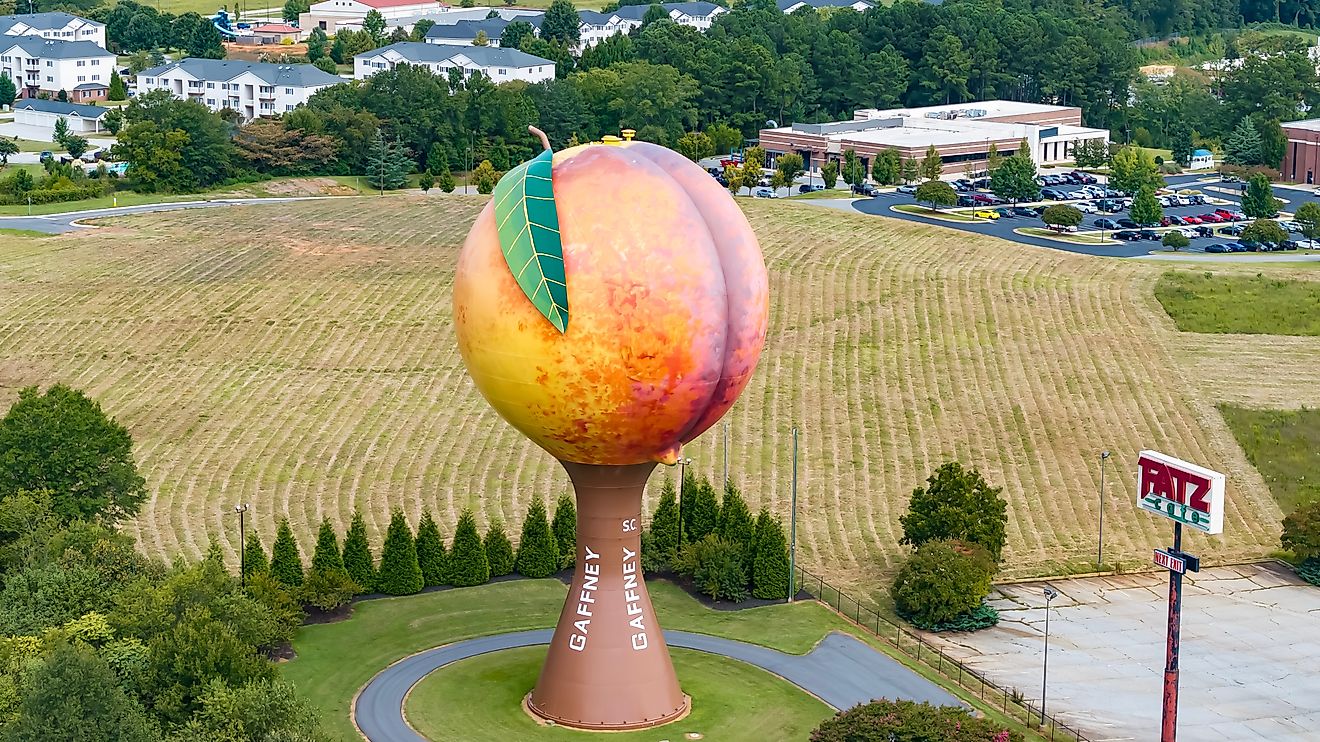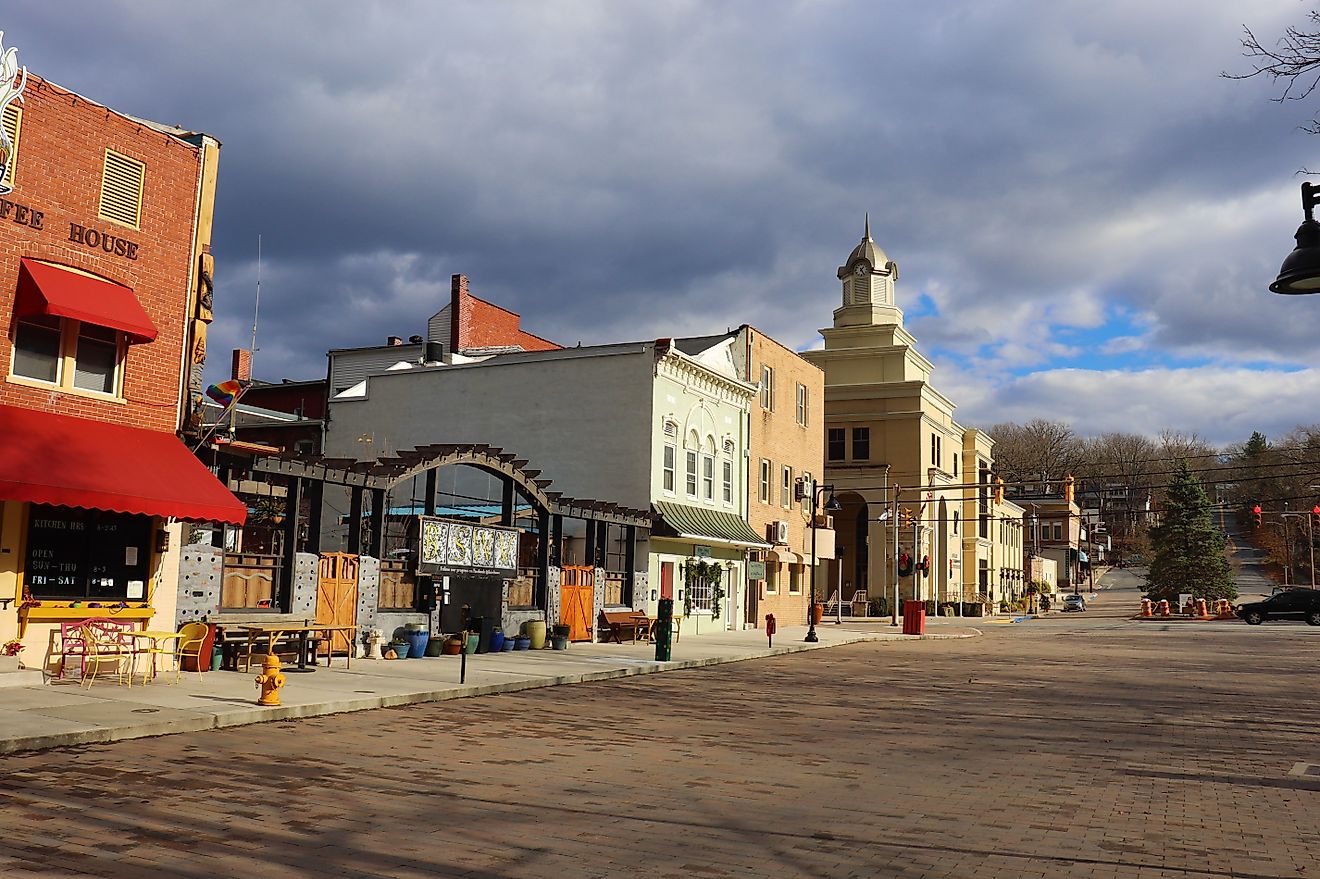
Traverse City, Michigan
Traverse City is a city and seat of Grand Traverse County, situated at the southern end of Grand Traverse Bay in the northwestern part of the Lower Peninsula of Michigan, United States. The city was initially settled in 1847 and named after the Grand Traverse Bay. Traverse City developed from a timber town into one of the country’s chief cherry-processing markets.
Geography Of Traverse City

Traverse City is the main inland port of the Grand Traverse Bay, along the harbor separated from Lake Michigan by the Leelanau Peninsula and divided almost evenly by a narrow peninsula of tiered hillsides and farmland called Old Mission Peninsula. The Boardman River is the city’s most prominent waterway, and along with Boardman Lake, the river forms a part of the Boardman River Watershed. The river's 740 sq. km watershed contributes one-third of the water volume to the bay and is one of Michigan’s top-ten fisheries. In fact, around 58 km of its 288 km is designated as a Blue-Ribbon trout fishery. According to the U.S. Census Bureau, Traverse City covers a total area of 22.43 sq. km, of which 21.57 sq. km is occupied by land, and 0.85 sq. km is occupied by water.
Climate Of Traverse City

According to the Köppen climate classification, the city of Traverse City experiences a warm-summer continental climate with warm, mild summers and severely cold winters. The warm season lasts from May to September, with July being the hottest month having an average high temperature of 26.6°C and a low temperature of 15.5°C. The cold season lasts from December to March, with January being the coldest month, with an average low temperature of -7.7°C and a high temperature of -1.6°C. Lake Michigan and Grand Traverse Bay significantly moderate the climate of Traverse City. The city receives an average annual precipitation of 29.12 inches and an average annual snowfall of 101.4 inches.
The Population Of Traverse City
In 2019, Traverse City, Michigan, was home to 15,600 people with a median age of 41.4. About 90.5% of the city’s population is considered White, of whom most are non-Hispanic. Two or more races account for 2.77% of the city’s population, the Hispanic community at 1.98%, American Indian & Alaska Native at 1.77%, and Black or African American at 1.49%. As of 2019, 2.78% of Traverse City residents were born outside of the country. The most common birthplace for foreign-born residents of Michigan was Mexico, followed by India and Iraq. In 2019, the student body in Traverse City was skewed towards women, with most graduating students being White, followed by Two or more races. The most popular majors in Traverse City are Liberal Arts & Sciences, Registered Nursing, and Marine Science & Merchant Marine Officer. The largest university by the number of degrees awarded was Northwestern Michigan College.
Economy Of Traverse City

The median household income in Traverse City is $57,076. Although the income inequality in Michigan (measured using the Gini index) is 0.475, which is lower than the national average, males tend to have an average income that is 1.37 times higher than the national average income of females. The economy of Traverse City employs around half the population in different industries. The largest industries are Health Care & Social Assistance, Retail Trade, and Accommodation & Food Services. The highest paying industries are Finance & Insurance, Finance & Insurance, and Public Administration.
Brief History Of Traverse City

Traverse City got its name from what was already named Traverse Bay, which was named by French explorers in the 18th century who had traversed the lands on their voyage. Reverend Peter Dougherty established the first settlement on Old Mission Peninsula in 1839. The area continued to grow as Captain Boardman purchased land at the Boardman River, building a sawmill in 1847. In 1851, Hannah, Lay & Co purchased the mill. They implemented some expansions to the mill, which attracted many people seeking work and helped the community to grow rapidly. In 1872, a railroad arrived at the area bringing a great deal of development to the community. The line is linked with Grand Rapids and Indiana Railroad facilitating the establishment of many other industries and creating employment opportunities that attracted more people to the area. The different acts of entrepreneurship and development had contributed to the economy and population growth of the city. In 2009, Traverse was listed as the second-best small town for travelers to visit in the United States. Moreover, it is one of the country's top producers of tart cherries, drawing many visitors during the harvest season for festivals and tasting.
Tourist Attractions In Traverse City

The Grand Traverse region grows more tart cherries than any other place in the country, and it draws around half a million visitors each year during the harvest in July for the Cherry Festival each year. In addition to the festival and wineries, the city offers a wide range of recreational activities, a thriving farmer’s market, art galleries, antiques, and so many places to dine.











